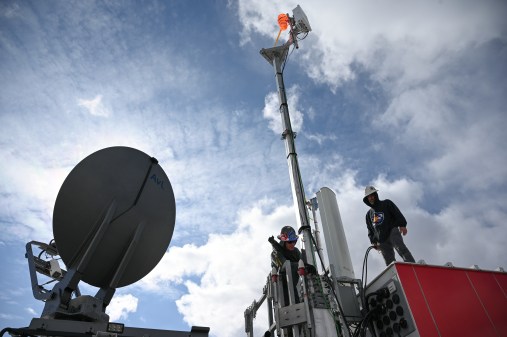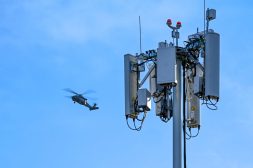US moves to open more spectrum for 5G while safeguarding military assets

The United States is looking to allow 5G providers to share part of the radio frequency spectrum already used by government agencies, including the Defense Department, and it’s reaching out to international organizations to help make that happen.
The State Department has submitted a proposal on behalf of the U.S. government to the Inter-American Telecommunications Commission (CITEL) asking to open up the 3300-3400 MHz band of the spectrum to 5G mobile services within the Americas, Pentagon Press Secretary Brig. Gen. Pat Ryder announced Monday during a press briefing. The regional group will debate and rule on the proposal at its upcoming meeting in May.
“By State Department submitting this proposal, the U.S. government is seeking to protect critical operations and capabilities while also [allowing] use of the 3300-to-3400 megaband, or megahertz band, for 5G mobile services by countries that wish to do so,” Ryder said.
The piece of the spectrum up for debate is a mid-band radio frequency, which ranges from 600 MHZ to 3.5 GHz. While the qualities of the mid-band spectrum are ideal for 5G mobile services, the Pentagon and other government agencies already use many of the frequencies in the mid-band for their own capabilities.
Which technologies use specific frequencies of the spectrum are often classified, but the U.S. military broadly uses the mid-band spectrum — including the 3300-3400 MHz band discussed in the State Department’s proposal — for both communications and radar capabilities, said Joseph Kirschbaum, director of defense capabilities and management at the Government Accountability Office.
“Over time, DOD has been trying to figure out which systems they might be retiring that might — in turn — open up the potential for shared spectrum use. But for capabilities that aren’t going away anytime soon, and as more of the mid- and high-bands are in question due to 5G and whatever is coming, it is harder for DOD to ensure that what they do use is free from congestion,” Kirschbaum wrote in an email to DefenseScoop.
The United States’ proposal to CITEL includes a number of protections that safeguard the Pentagon’s assets already using this portion of the spectrum. These include a requirement that “protects global radiolocation service above other radio services in the 3300-3400 MHz band in the Americas region, thus requiring other commercial users in the band to protect global radiolocation operations,” a Defense Department spokesperson told DefenseScoop in an email.
In addition, the proposal “ensures that countries in the Americas region obtain agreement from neighboring countries before a 5G system is brought into use” and “requires additional studies on technical and operational measures to assist countries in the Americas region with the coordination of 5G and other commercial wireless technologies and DoD radar systems operating in neighboring countries,” the spokesperson wrote.
The growing demand for commercial and federal 5G services have sparked debate across the U.S. government on how to best allocate the electromagnetic spectrum between the government and service providers, or how to share it. The Defense Department is due to submit a study to Congress on the practicability of sharing portions of the spectrum at 3100-3450 MHz by the end of September.
If accepted by CITEL, the proposal would then be considered at the November 2023 World Radiocommunications Conference (WRC-23), a conference bringing together nations around the world to review and revise Radio Regulations, which govern the use of the radio frequency spectrum.
The proposal would permit countries in the Americas to adopt rules for 5G in this band and other wireless technologies if approved by WRC-23, the Pentagon spokesperson said. Within the United States, the proposal “does not prevent” U.S. spectrum regulators from adopting sharing solutions if they are determined feasible by the ongoing study, the spokesperson added.






